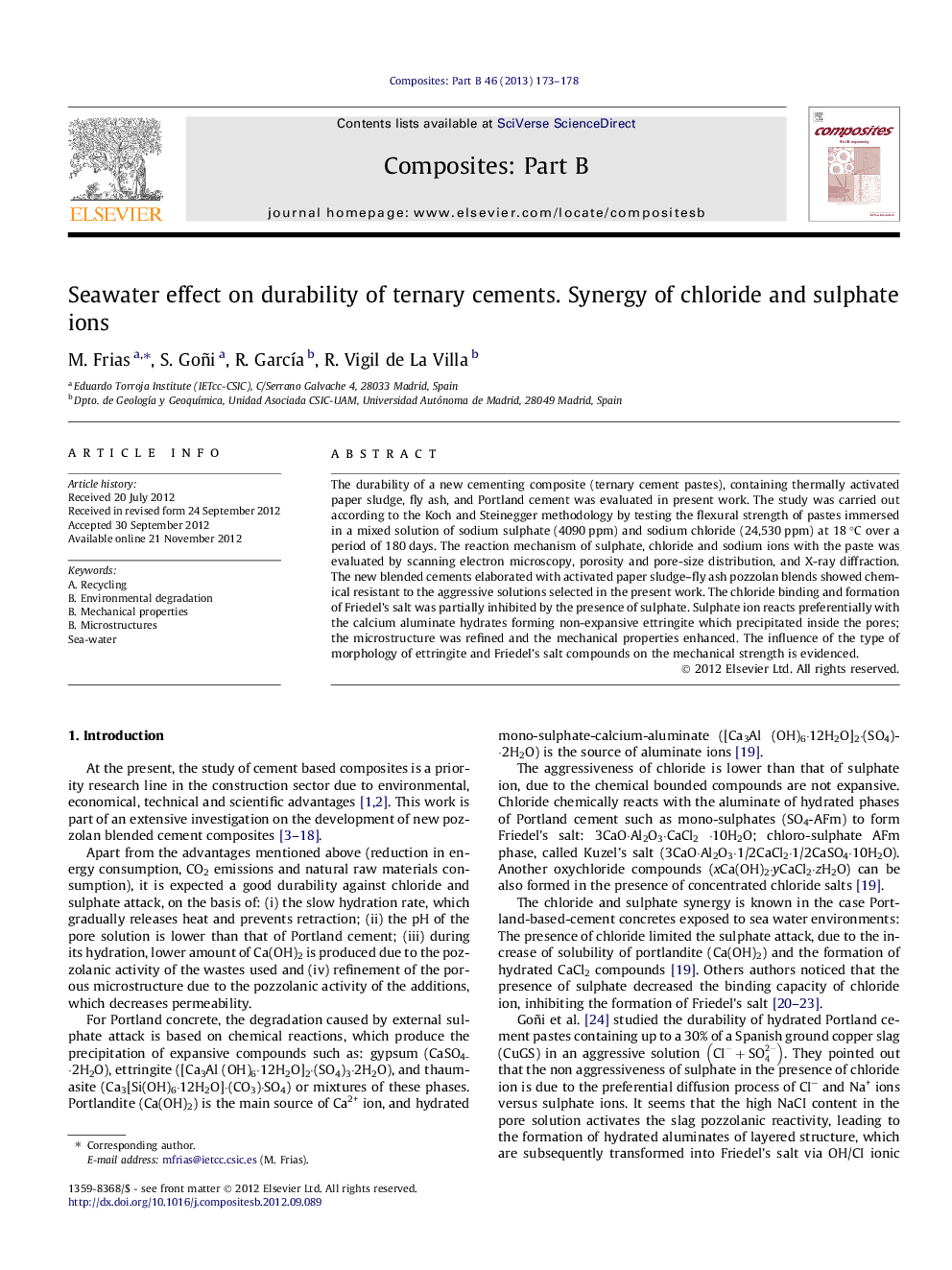| Article ID | Journal | Published Year | Pages | File Type |
|---|---|---|---|---|
| 818506 | Composites Part B: Engineering | 2013 | 6 Pages |
The durability of a new cementing composite (ternary cement pastes), containing thermally activated paper sludge, fly ash, and Portland cement was evaluated in present work. The study was carried out according to the Koch and Steinegger methodology by testing the flexural strength of pastes immersed in a mixed solution of sodium sulphate (4090 ppm) and sodium chloride (24,530 ppm) at 18 °C over a period of 180 days. The reaction mechanism of sulphate, chloride and sodium ions with the paste was evaluated by scanning electron microscopy, porosity and pore-size distribution, and X-ray diffraction. The new blended cements elaborated with activated paper sludge–fly ash pozzolan blends showed chemical resistant to the aggressive solutions selected in the present work. The chloride binding and formation of Friedel’s salt was partially inhibited by the presence of sulphate. Sulphate ion reacts preferentially with the calcium aluminate hydrates forming non-expansive ettringite which precipitated inside the pores; the microstructure was refined and the mechanical properties enhanced. The influence of the type of morphology of ettringite and Friedel’s salt compounds on the mechanical strength is evidenced.
